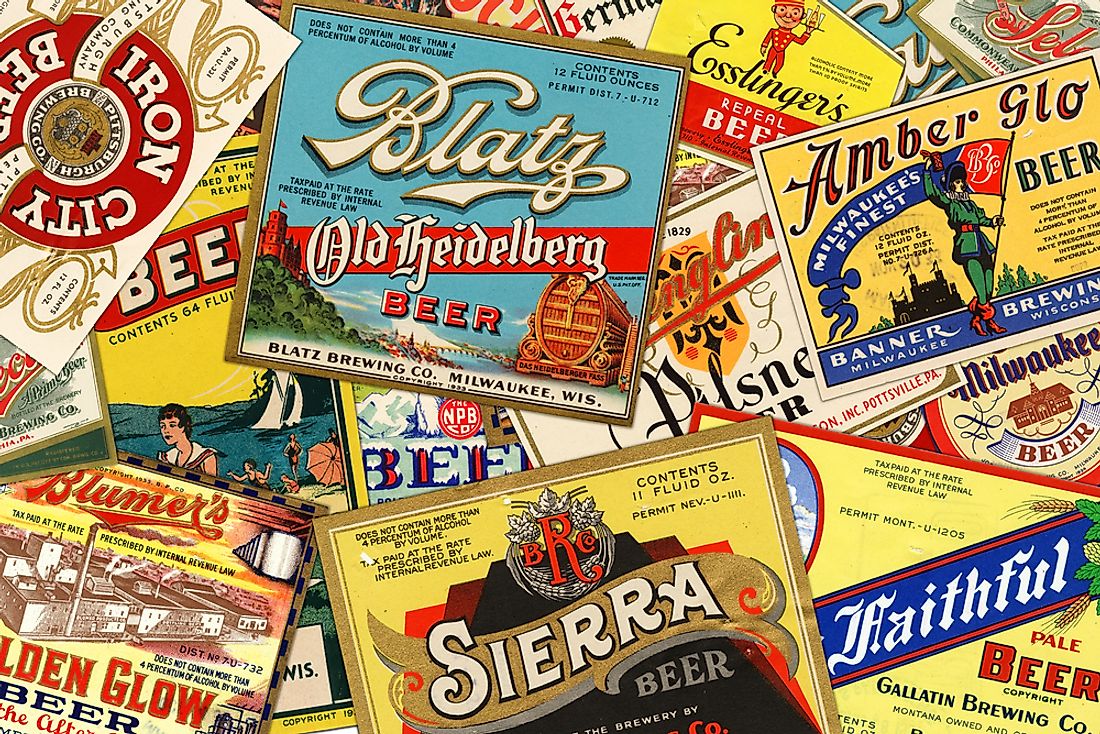The Beer Capital of the World

Milwaukee, Wisconsin has nicknames such as Brew City, Beer City, Brew Town, and Beertown. All of these nicknames reflect Milwaukee's position as being a major center of beer production in the US. For a large portion of Milwaukee's history, the city was known as the "beer capital of the world". The production of beer in Milwaukee dates back to the 1850s. Human geography has played a major role.
German Immigration To Milwaukee
Milwaukee has often been known by another nickname, "German Athens". While Milwaukee is not located in Germany, this city is known for its German heritage. Early immigration has played a major role. Many immigrants from Germany immigrated to the United States of America, a large number of which settled in Milwaukee, as well as other cities in Wisconsin. Beer is an important part of German culture, and it remained part of these German's culture while spreading to the US. This is known as hierarchical and expansion diffusion.
Geography and Marketing
German immigration to Milwaukee has certainly played a role in breweries being built in Milwaukee. There are also other factors that would make Milwaukee a large brewing center. Beer sales would be a success in Milwaukee and in areas nearby. However, Milwaukee had to look outside of the Greater Milwaukee area and the state of Wisconsin. There were not enough people nearby to generate high beer sales. Brewers in Milwaukee needed to look outside of their immediate geographic area.
There were, in fact, nearby regions with larger populations where beer consumption was growing. Milwaukee is located 134 km (83 mi) from Chicago. Both Milwaukee and Chicago are located on Lake Michigan, which is like a large inland sea. Chicago was a major beer consuming region. The Chicago Fire of 1871 destroyed many breweries within the city of Chicago. One particular beer company, Schlitz, used the Chicago Fire of 1871 as an opportunity to expand into other beer markets. With Chicago nearby, shipping beer through Lake Michigan was easy. Beer sales would rise rapidly due to proximity and a natural disaster. Milwaukee would gain a reputation for its beer.
As beer companies in Milwaukee sought to expand their markets, Chicago wasn't the only region where Milwaukee beer would be shipped to. With railroads leading to populations further west, beer would be shipped throughout the United States of America. As demand for Milwaukee's beer was on the rise, the supply needed to be fulfilled. The production of beer would rise rapidly into the late 19th and 20th centuries.
Milwaukee Breweries
Milwaukee has long been synonymous with beer. It is part of the city's culture, as well as the city's economy. This has been the case since the 19th century. Four of the world's largest breweries operated in the city of Milwaukee: Miller, Blatz, Schlitz, and Pabst. Today, Miller is the only one of the big four that operates in Milwaukee. However, the beer industry is still an important part of Milwaukee's economy. There are at least 20 breweries operating in Milwaukee. Microbreweries and craft brewing are becoming a part of Milwaukee's culture and economy. The state of Wisconsin has the 11th highest amount of craft breweries per capita in the US. Beer halls are plentiful in the city of Milwaukee.
Milwaukee's heritage in beer production also manifests itself in sports. Milwaukee is home to a Major League Baseball team known as the Milwaukee Brewers. The stadium that the team plays in is called Miller Park, named for Miller Brewing Company.
Milwaukee's beer industry reflects human geography. Immigration from Germany, cultural diffusion, and expansion into markets near and far, have helped Milwaukee develop into a major center for beer production.











